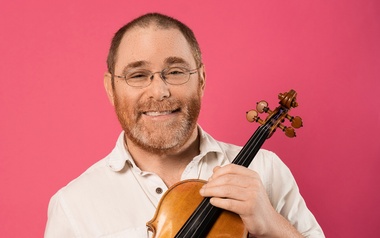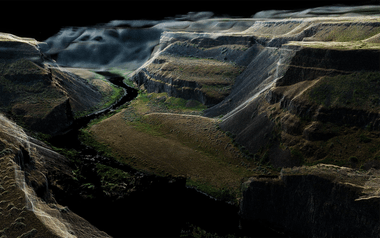Blog
OCTOBER 31, 2023
Romantique

Our November concert features three magnificent works for winds and piano, all composed in the late romantic style. When we think of “romantic” music, we think of beautiful melodies, luscious harmonies, real heart-on-the-sleeve stuff. To my ears, this music also represents joyous naiveté, perhaps a reflection of the Belle Époque, with its feeling of optimism and peace.
The Belle Époque in music is remembered as a poignant and nostalgic era, a fleeting moment of hope and creativity that ultimately gave way to the somber realities of the 20th century, reflecting the profound impact of war on culture and society.
We look forward to having you join us for this journey of unabashed and unapologetic musical romanticism, performed by the virtuosos of the Arcturus Quintet, joined by pianist Maria Garcia.
Ron Blessinger
Violinist, 45th Parallel Universe
Romantique
Arcturus Quintet and Maria Garcia
Tuesday, November 21, 2023
7:00-8:00 PM @ The Old Madeleine Church
Buy Tickets
Program Notes:
Ludwig Thuille: Sextet in B-flat major, Op. 6 for wind quintet and piano (1888)
- Allegro moderato
- Larghetto
- Gavotte: Andante, quasi Allegretto
- Finale: Vivace
Ludwig Thuille (1861-1907) was born in the then-Austrian town of Bozen, located in the South Tirol (now in Italy and called Bolzano). Thuille befriended Richard Strauss when he was ten, and they remained friends for the rest of Thuille’s life. Strauss’ influence on Thuille’s music was significant, with Thuille going on to found the New Munich School of composition, with Ernest Bloch among his students.
Thuille’s Sextet in B-flat major, Op. 6 is written for wind quintet and piano. Richard Strauss was instrumental in producing the premiere performance and held a high opinion of the work. In four movements, it begins with an atmospheric and engaging Allegro moderato. This vast movement begins softly with a horn solo bringing forth a noble melody, followed by melodic music that shows the influence of Strauss. The Larghetto which follows also begins with a horn solo. The main theme is somber and dignified. The very effective third movement, Gavotte: Andante, quasi Allegretto, is a charming dance that evokes a country scene. The finale, Vivace, is an exciting romp, full of high spirits and lovely melodies.
Walter Gieseking: Quintet for Piano and Winds in B flat major (1919)
- Allegro moderato
- Andante
- Vivace molto scherzando
Walter Gieseking was a celebrated German pianist known for his exceptional artistry and technical prowess. Born in 1895, Gieseking’s contributions to classical music left an indelible mark on the 20th century. He was renowned for his interpretations of the works of Debussy and Ravel, which showcased his deep understanding of impressionist and modernist styles. Gieseking’s performances were characterized by their exquisite tonal control, sensitive phrasing, and a remarkable ability to conjure delicate and nuanced textures from the piano. His playing was often described as ethereal and poetic, and he had a gift for bringing out the colors and subtleties of each composition he performed. Gieseking’s legacy endures through his extensive discography and the enduring impact of his interpretations, making him a revered figure in the world of classical piano.
Walter Gieseking’s Quintet for Piano and Winds is a gem of 20th-century chamber music that masterfully combines the lyrical elegance of wind instruments with the virtuosity of the piano. Composed in the early 1920s, this quintet reveals Gieseking’s remarkable ability to navigate the delicate balance between instruments of varying timbres, creating a harmonious musical dialogue that is both engaging and emotionally resonant.
The quintet consists of three movements, each exploring a unique facet of Gieseking’s musical creativity. The opening movement, marked by its tender melodies and graceful exchanges between the piano and wind instruments, sets the tone for the entire composition. The second movement, Andante, begins with a languid solo for the horn, with the rest of the movement carrying on the conversation between the horn and the other wind instruments. The third movement flows in a lively 6/8 meter, giving the players a chance to show off their virtuosic chops!
Albert Roussel: Divertissement for Piano and Wind Quintet (1906)
Albert Roussel’s musical awakening came late. His early years were tragically unstable – his father died when he was one, his mother when he was eight – and he moved from house to house to be raised by a succession of relatives. In 1887, he entered the Naval Academy and soon embarked on a career as a naval officer. In 1892, he made his first stabs at composition while on an ocean voyage. He entered the Schola Cantorum in Paris and so excelled in the theory classes taught by the organist Eugène Gigout and the music history and orchestration classes of the school’s director, Vincent d’Indy, that he was invited to assume the direction of the Schola’s counterpoint classes, which he did from 1902-14. His pupils at the Schola included Erik Satie and Edgard Varèse, both of whom felt they learned a great deal from him, even if they chose not to apply it to their own compositions. In the ensuing years, Roussel enriched other interesting composers through private coaching, including Alexis Roland-Manuel, Knudåge Riisager, and Bohuslav Martinů.
Albert Roussel’s Divertissement for Piano and Wind Quintet is a vibrant and imaginative chamber work that encapsulates the composer’s transition from his earlier impressionistic style to the neoclassical language that defined much of his later output. Composed in 1906, this piece offers a delightful and spirited musical journey, showcasing Roussel’s penchant for rhythmic vitality, playful melodies, and colorful instrumentation. The piece is composed of a single movement, approximately seven minutes long, with its three sections played without pauses.
Don’t forget to share this post!
YOU MAY ALSO LIKE…



Ewer, Always On My Mind
Lisa Lipton recently interviewed Greg Ewer, founder of 45th Parallel and member of the Pyxis Quartet, about the Friends of…



Anatomy of a Concert
“Check out this amazing piece by Andy Akiho!” I can’t remember who sent that text to me, though it was probably one my fellow music geek buddies…



Lisa Interviews Geologist Dr. Scott Burns
Executive Director Lisa Lipton met with Dr. Scott Burns, Professor Emeritus at…